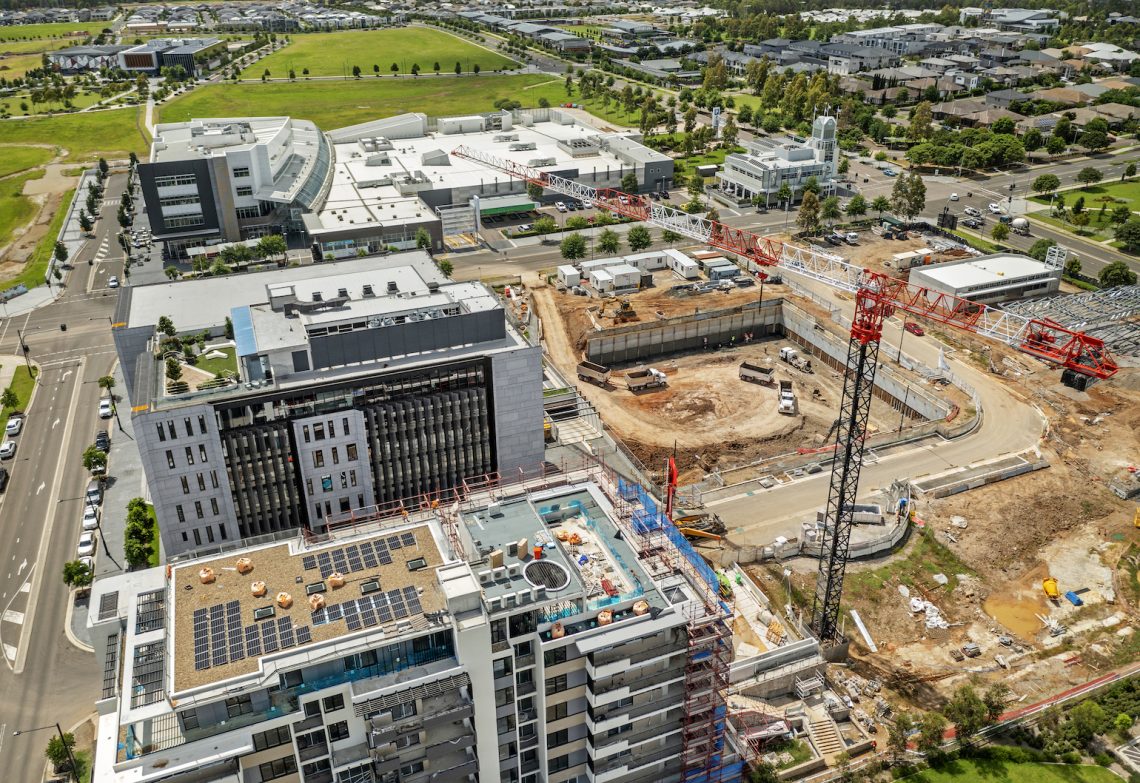Engineers Australia Chief Engineer Jane MacMaster has reasserted Engineers Australia’s commitment to helping restore confidence in the building sector in New South Wales and across the country in the wake of high-profile revelations of defects in apartment blocks in Sydney and beyond.
“We want fewer buildings with defects. We want owners of buildings and residents of buildings to be confident that they own and live in and work in buildings which meet the necessary requirements, and we also want to avoid the economic disadvantages of the cost of rework associated with building defects,” MacMaster told create.
“The engineering profession enjoys one of the highest levels of trust and confidence from the community and society more broadly; the building sector is one part of our profession where we don’t enjoy that high level of confidence. So our endgame is to restore the public confidence and trust in the building sector and the engineering professions’ role in that.”
MacMaster said a crucial part of this goal was to continue working closely with the NSW Office of the Building Commissioner (OBC).
“We’re in this for the long-term and we’re really keen to engage with the OBC as much as we can,” she said.
“From our point of view, we have always been very collaborative because we believe so strongly in the purpose of the building sector reform agenda.”
We have many dedicated members who contribute a lot of their time, and our employees are dedicated to this work.”
Enhancing collaboration
According to MacMaster, the problems confronting the building sector are systemic and will require the cooperation of engineers with other professions, such as surveyors and architects, as well as builders and others in the sector to properly address.
“Engineering is one of several professions and skill areas that come together in the building sector,” she said.
“We’re quite cognisant that this is a system level challenge and we need to work collaboratively with all parts of the building sector to lift standards of practice in that sector.”
That means working with governments and other regulators across the nation.
“We are actively engaged in all jurisdictions and at the national level with the codes on specific initiatives and in collaboration with others towards that objective,” MacMaster said.
“We’ve been working with the OBC for a couple of years intensively on a number of fronts. We have provided input on the engineering practice standard in New South Wales, particularly in the areas of third-party review and inspections.”
Among Engineers Australia’s future collaborative efforts with the OBC, MacMaster says she is looking forward to undertaking a joint site visit in 2023.
Investigating complaints
As part of Engineers Australia’s commitment to improving the standards of practice in the building sector Engineers Australia has recently undertaken a comprehensive review of its own complaints process. The authority to investigate complaints and discipline members and National Engineering Register registrants reflects Engineers Australia’s commitment to upholding high standards of practice and community trust in the profession.
‘Our Code of Ethics requires, amongst other things, that members and NER registrants put the community interest ahead of other personal or sectional interests, and practice competently according to the competency standards which are aligned with international benchmarks,’ MacMaster says.
“We are not a regulator, and we can’t always action a complaint, depending on the nature of it; sometimes it’s more appropriate to go through the tribunals or the courts.
“The disciplinary proceedings, which refer to the action that might occur depending on the findings, can be as little as there’s no finding against the person against whom there’s been a complaint made, right through to being struck off Engineers Australia’s membership and the registers.
“Engineers Australia’s complaints process is one element in its broader Professional Standards Framework, which is our systems of processes and resources that support engineers to be ethical, competent and high-performing. Further information on how the complaints process is being strengthened can be found on the Engineers Australia website.”




Has Eng Aust acknowledged and/or responded to the criticisms leveled at it in the Dec 2020 report by Weir Legal & Consulting “The house with no piers”, as commissioned by the OBC? Now 2 years ago.
It is a publicly available document and Eng Aust should respond in kind.
Not to my knowledge Geoff Fletcher and I am the owner of the House with no piers.
Jonathon,
I was the leader who originally developed the Windows Energy Rating Scheme with Australian Window association and the Australian Glass & Glaziers Association, sponsored by Pilkington glass. This then became integrated into NatHers and then later, NABERS. we still have much of this material which was mastered on a CD for trainers.
I have been Chair of the Risk Engineers, Vic and on the CLM. If you need any assistance in these areas, let me know.
I live in a 3 yo apartment block in Hawthorn, Melbourne. This building has very common defects of excessive water ingress, concrete slab cracking and corrosion of the galvanised steel bondek extensively used on the soffit in the basement levels.
The breakdown and or absence of satisfactory waterproofing and shoddy construction techniques is evident and supported by a condition assessment undertaken by consulting engineers engaged by the Owners Corporation.
Does Engineers Australia realise that Building Surveyors who sign off on the compliance of the building with the design and standards, are employed by the builder. This means they are conflicted rather than being arms length and independent . How this change from the previous system of inspection and sign off where the building surveyor employed by the councils came about I do not know. The system is flawed and contributes to the level of defects and construction that is not fit for purpose.
I hope EA will drive very hard the changes essential to restore the quality of building construction in Victoria as well as NSW.